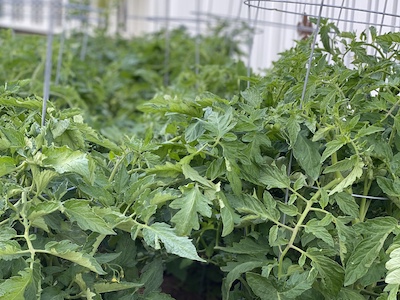Ask an Expert - How Does Your Garden Grow? Tips for July

It can be a challenge to keep gardens growing well as summer heats up, so Utah State University Extension’s Gardener’s Almanac provides a checklist of tasks to help your garden, grass and plants grow well in July. Also included are links for tips and further information.
July Checklist
· Start enjoying the tomato harvest.
· Side dress (fertilize) potatoes in the garden with nitrogen in early July.
· Harvest summer squash and zucchini when they are still small and tender.
· Deep water established trees and shrubs about once per month during the heat of summer.
· Deadhead (cut off) spent blossoms of perennial and annual flowers.
· Divide crowded iris or daylilies once they have finished blooming.
· Visit alpine areas for wildflower displays.
· Remove water sprouts (vertical shoots in the canopy) of fruit trees to discourage regrowth and to reduce shading.
· Renovate perennial strawberry beds by tearing out old crowns (mother plants) and applying fertilizer to stimulate new runners.
· Turfgrass only needs 1 ½ to 2 inches of irrigation per week. Click here to learn about irrigation needs in your area.
Pests and Problems
· If tomatoes are not producing, it could be due to hot weather (95°F and above), which causes flower abortion.
· Blossom end rot (black sunken areas on the end of tomatoes) is common and is caused by uneven watering.
· Check under leaves of pumpkins, melons and squash plants for squash bugs.
· Treat corn for corn earworm.
· Spider mites prefer dry, hot weather and affect many plants. Treat for spider mites by using “softer” solutions such as spraying them with a hard stream of water or by using an insecticidal soap. Spider mites can be identified by shaking leaves over a white piece of paper. If the small specs move, you have mites.
· Control codling moth in apples and pears to reduce wormy fruit. For specific timing, see our Utah Pests Advisories.
· Historically, control of the greater peach tree borer in peaches, nectarines and apricots occurs the first of July. However, for specific timing, see our Utah Pests Advisories.
· Click here for instructions on how to submit a sample to the Utah Plant Pest Diagnostic Lab.
· Watch for symptoms of turfgrass diseases.
· Monitor for damaging turfgrass insects.
To see a video on the July Gardener’s Almanac tips, click here.
By: JayDee Gunnell, Utah State University Extension horticulturist, Jaydee.gunnell@usu.edu


 Utah 4-H & Youth
Utah 4-H & Youth